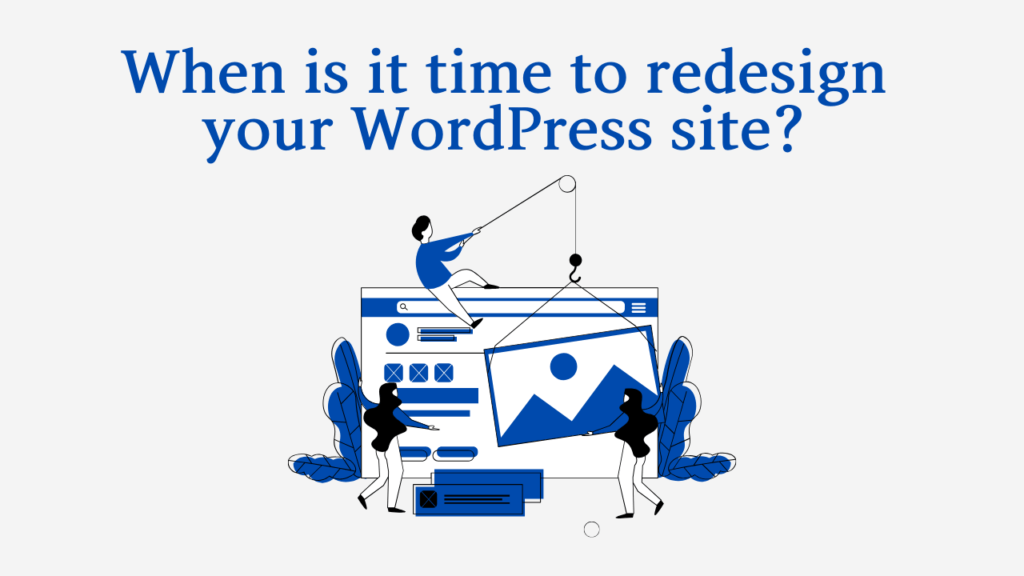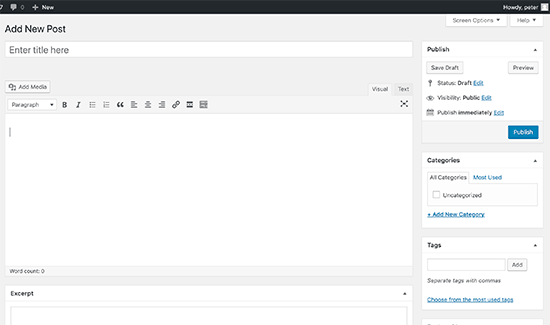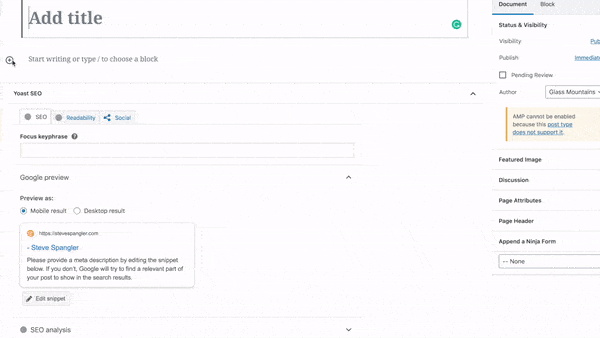When is it time to redesign your WordPress site?

Entropy. That’s s a fancy word, isn’t it?!
Put simply it means the ‘gradual decline into disorder‘.
And websites are not immune from entropy – they, like the universe, will also gradually decline into disorder. Cheery eh?
The key though is to spot the warning signs early so that you are ready for renewal.
Why do websites become out of date?
Let’s say your website was initially designed 5 years ago.
In that time, WordPress has made significant changes. A website built a long time ago, cannot easily make use of those modern feaures. Yes, older sites can be updated, but updated is not the same as ‘building a site from the ground up so that it plays to the strengths of the current features and techniques that are now available‘.
Let’s consider one example (out of many enhancements that modern WordPress now offers); when we first built WordPress websites, the editor (that allows you to change content on your site) looked something like this:

Fig 1 – Classic WordPress editor
As you see in Fig 1 – it’s pretty much like a Word document – a big window where you can drop scoopfuls of words & images etc.
[adrotate banner=”3″]
[trumpet sounds] Hail, Gutenberg!
However, not so long ago, WordPress unveiled its brand new Gutenberg editor. As you can see below, this looks radically different:

Fig 2 – The Gutenberg editor in WordPress
Admittedly it’s not glaringly obvious from Fig 2 above, you should at least see that you can add structured blocks of content. This structure makes your website content much more versatile. Even better, custom blocks can be designed for your particular brand & information needs. E.g. block like this (which summarise a case study for one of our clients):

Fig 3 -Example of a designed block
Note: with Fig 3 – we didn’t actually use Gutenberg, but it wasn’t classic editor either. We used an enhanced layout system based on Advanced Custom Fields which pretty much extended the basic WordPress editor. Now, with Gutenberg, we don’t need to go this route.
The key benefit for clients here is this: with this advanced Gutenberg content editor, we can create a design system for clients, a smorgasbord of layout options which clients can easily use to create visually rich pages. Before Gutenberg, that was not easily achievable (I’ll save how we did achieve it for a separate post but Fig 3 hints at that).
Having a much more powerful visual system at your fingertips will give you increased flexibility, will allow your website to resonate better with your audience, and will give you greater longevity in terms of your next WordPress site.
[adrotate banner=”4″]
The Gradual Decline into Disorder
A big benefit of WordPress is how easily you can:
- create new pages or blog posts
- add/change your website menu
- change the structure of your site by moving pages around etc
A big downside of WordPress is how easily you:
- create new pages or blog posts
- add/change your website menu
- change the structure of your site by moving pages around etc
The point here is this: with website redesign projects, we get to use our extensive website design skills (IA, UX, a11y etc) to help create for you a website which is finely tuned to the needs of your target audience and the user journeys they need to make.
However, after the website is live, and you begin to add new pages, change structure etc – you are slowly but surely moving away from the informed structure we started with. Yes at first the divergence is minor, but over time, as years roll by, the change will become significant- and not to the benefit of your target audience.
Has your business changed?
Aside from the changes to WordPress itself, let’s now address the glaring elephant in the room: your business.
Is it possible that your business has changed in the last five years?
- Do you offer different products/services?
- Is your messaging different?
- Has your target audience changed?
- Has your approach to marketing changed?
- Has your sales process changed?
- Has your branding changed?
- etc etc
….I’m betting the answers to some or all of the above here will be a resounding ‘yes‘.
And incremental changes to your WordPress site can only take you so far with plastering over the cracks.
What to do next
Hopefully, by now you’ve warmed to the idea that your website has a finite shelf life, and you will need to have it redesigned at some point – it’s not about if, it’s when.
With a WordPress site, we can definitely help you with that and (we can potentially help on some other platforms as well).
Please get in touch and we’ll have a chat about what you may need.
Joel
Other links:
Factors which can affect your website redesign cost.
